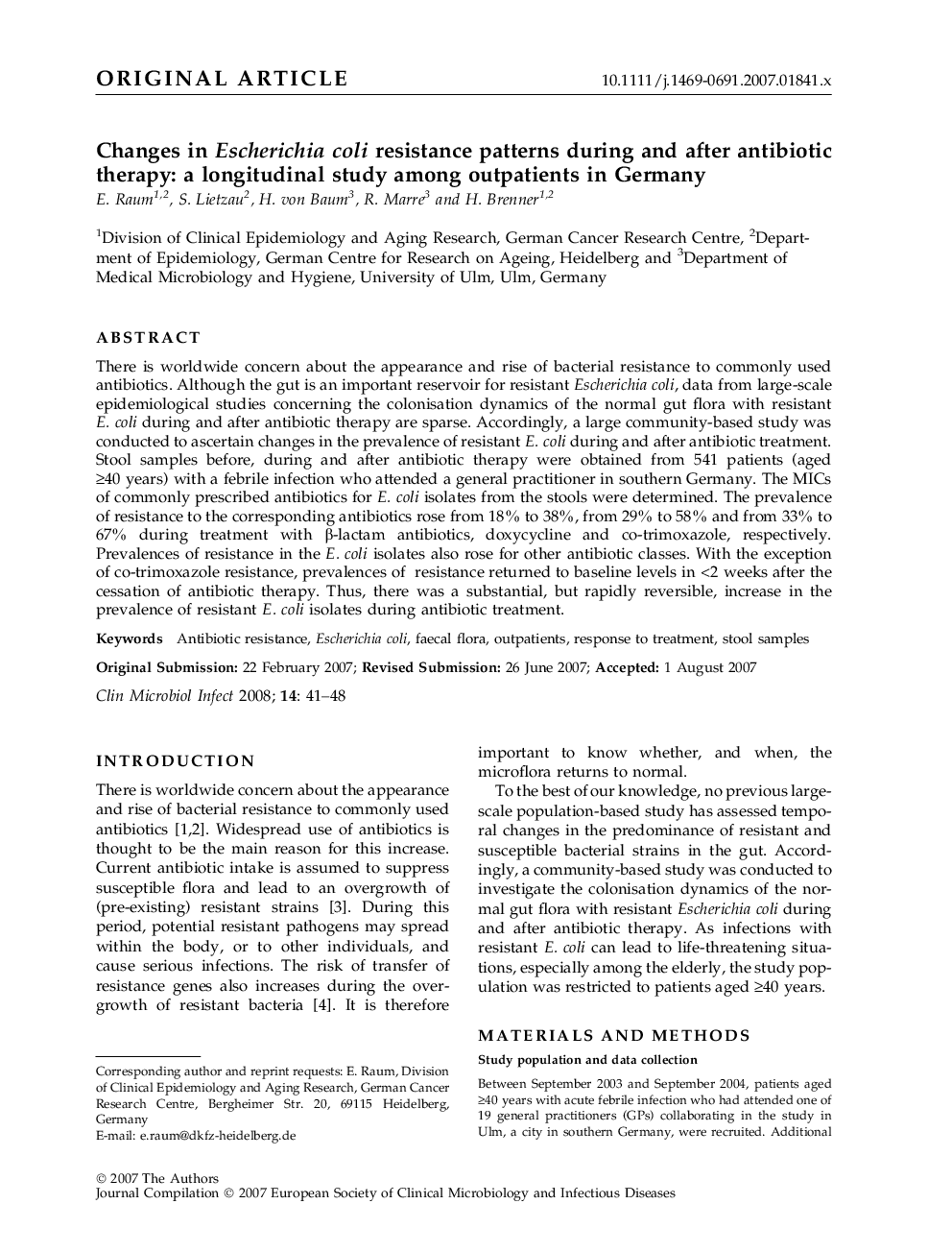| Article ID | Journal | Published Year | Pages | File Type |
|---|---|---|---|---|
| 6131323 | Clinical Microbiology and Infection | 2008 | 8 Pages |
Abstract
There is worldwide concern about the appearance and rise of bacterial resistance to commonly used antibiotics. Although the gut is an important reservoir for resistant Escherichia coli, data from large-scale epidemiological studies concerning the colonisation dynamics of the normal gut flora with resistant E. coli during and after antibiotic therapy are sparse. Accordingly, a large community-based study was conducted to ascertain changes in the prevalence of resistant E. coli during and after antibiotic treatment. Stool samples before, during and after antibiotic therapy were obtained from 541 patients (aged â¥40 years) with a febrile infection who attended a general practitioner in southern Germany. The MICs of commonly prescribed antibiotics for E. coli isolates from the stools were determined. The prevalence of resistance to the corresponding antibiotics rose from 18% to 38%, from 29% to 58% and from 33% to 67% during treatment with β-lactam antibiotics, doxycycline and co-trimoxazole, respectively. Prevalences of resistance in the E. coli isolates also rose for other antibiotic classes. With the exception of co-trimoxazole resistance, prevalences of resistance returned to baseline levels in <2 weeks after the cessation of antibiotic therapy. Thus, there was a substantial, but rapidly reversible, increase in the prevalence of resistant E. coli isolates during antibiotic treatment.
Keywords
Related Topics
Life Sciences
Immunology and Microbiology
Microbiology
Authors
E. Raum, S. Lietzau, H. von Baum, R. Marre, H. Brenner,
